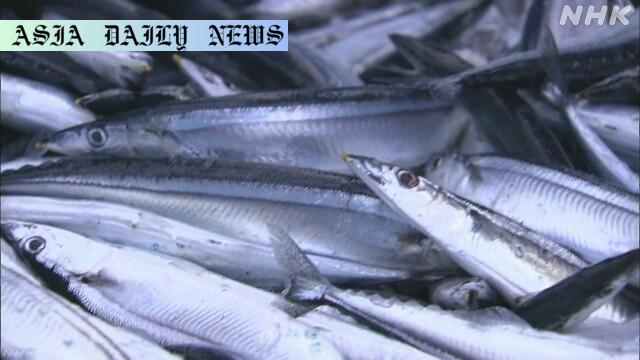Pacific saury stocks likely to remain low in Japan’s fishing area.

Decline in Pacific Saury Stocks
Pacific saury, a favored fish in Japan, has seen a drastic decline in its available stock over the last decade. Recent research by the Japan Fisheries Research and Education Agency highlights that Pacific saury numbers in fishing areas off the coast of Hokkaido to Chiba are expected to remain at historically low levels, similar to last year’s figures. This marks a concerning pattern for the Japanese fishing industry, which relies heavily on this species. Notably, the annual catches of Pacific saury have dropped significantly, from over 200,000 tons in 2008 to merely 39,000 tons in 2022, signifying an alarming reduction in fishery resources.
Rising Sea Temperatures and Migration Impact
The reduction in Pacific saury stock levels is largely attributed to changing environmental conditions, including the rise in sea temperatures. This ecological shift is pushing saury farther into international waters in the North Pacific, areas less frequently fished by Japanese vessels. Additionally, the delayed migration from these waters into traditional Japanese fishing zones has significantly contributed to the reduced catch numbers during the active fishing season between August and October.
Implications for the Fishing Industry
The declining catches have profound economic implications for the Japanese fishing industry and the broader supply chain. Once boasting the largest saury harvests globally, Japan faces challenges in maintaining this integral part of its seafood market. The average fish size in supermarkets is expected to increase slightly, but overall shortages could lead to rising prices and consumer dissatisfaction. Meanwhile, the increasing competition for Pacific saury resources in international waters further complicates the recovery prospects for Japanese fisheries.
Efforts for Sustainability and Industry Survival
Addressing the Pacific saury crisis requires a multi-faceted approach. Collaborative efforts between international agencies to monitor fish stocks, implement sustainable fishing practices, and mitigate the effects of climate change could significantly contribute to stabilizing future harvests. Furthermore, diversifying fishing practices and exploring alternative seafood options are critical strategies for Japan’s fishing sector as it adapts to the prolonged low saury catches.
The Way Forward
As Japan grapples with declining Pacific saury stocks, researchers emphasize innovative methods to track migration patterns more accurately and adjust fishing schedules accordingly. Raising public awareness about sustainable seafood choices is also crucial for preserving this valuable marine resource. Balancing innovation with conservation is essential in navigating this complex challenge and fostering recovery for one of Japan’s most iconic fisheries.
Commentary
Adapting to Changing Realities in Fisheries
The Pacific saury decline presents a strong case for revisiting how climate and ecological changes are reshaping traditional industries. For decades, Pacific saury has symbolized Japan’s dynamic seafood culture, but with global temperatures rising and ocean ecosystems evolving, the industry must embrace new strategies. Recognizing that the era of abundant saury may be over demands not only innovation but also resilience from fisheries and allied sectors.
Collaborative Efforts in Conservation
One of the most critical steps in addressing the Pacific saury crisis involves international cooperation. Japan cannot tackle this issue in isolation; collective actions like cooperative monitoring of fishing zones, establishing transboundary management protocols, and enforcing sustainable fishing quotas in international waters are imperative. Regional cooperation adds another layer of support, promoting information sharing that benefits all stakeholders reliant on Pacific saury.
Economic and Cultural Impacts on Japan
The shortage of Pacific saury impacts more than just fishermen; it permeates into Japan’s culture and consumer markets. For many Japanese citizens, this fish serves as a nostalgic staple, enjoyed grilled and served simply with rice or soy. The depletion is likely to influence household budgets and dietary patterns, sparking debates on sustainability and balancing modern pressure with traditional lifestyles.
Conclusion: Innovating for the Future
The Pacific saury decline is a microcosm of larger environmental challenges awaiting creative solutions by industries tied to natural systems. As policymakers, scientists, and local stakeholders collaborate, future strategies combining technology, sustainable practices, and education will pave the way for managing this crisis. While challenges are mounting, the global fishing community can view Japan’s actions as a template for sustainable management in a rapidly warming world.


